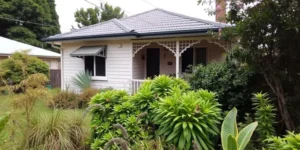Buying a home can be tough. Many people struggle to save for a deposit. Rent 2 buy houses offer a new way to own a home. This blog will show you how rent-to-own schemes work. Ready to learn more?
Key Takeaways
- Rent-to-own lets you lease a home for 2-5 years before buying it.
- You pay extra rent each week to build up savings for a deposit.
- Costs include higher rent, option fees, and repair bills.
- Benefits are living in the home first and locking in the price early.
- Risks include losing money if you don’t buy and needing a home loan at the end.
What is Rent-to-Own?

Rent-to-own is a unique approach to home purchasing. It combines elements of renting and buying. You lease a property for a specific period, typically 2-5 years. At the conclusion of this term, you have the option to purchase the house.
The process involves signing a lease agreement with the property owner. This agreement establishes the future purchase price of the house. You make monthly rental payments, with a portion potentially contributing towards the eventual purchase.
When the lease ends, you have the opportunity to buy the house at the predetermined price. This usually requires obtaining a home loan. Rent-to-own is beneficial for individuals who currently cannot secure a bank loan.
It provides an opportunity to accumulate savings or improve credit standings.
How Rent-to-Own Schemes Work
Now we’ll examine how rent-to-own operates. Rent-to-own arrangements involve several key steps. First, you select a house you prefer. Then, you enter into an agreement with the owner.
This agreement allows you to rent the house for a specified period, typically three years.
You pay weekly rent, plus an additional amount. This extra amount contributes towards the future purchase of the house. In our example, rent is $600 per week. The extra amount is $100 per week.
Over three years, you pay $109,200 in total. At the conclusion, you can purchase the house for a price agreed upon at the beginning. In this instance, it’s $450,000. You’ll need a loan for $406,400 to complete the purchase.
The total cost after three years is $543,600, including all the rent you’ve paid.
Costs Involved in Rent-to-Own
Rent-to-own deals come with extra costs. You’ll pay more than market rent each month. This higher rent helps build your deposit. You might also pay option fees. These fees can add up to tens of thousands of dollars.
But don’t worry – they come off the final price when you buy.
Other costs can sneak up on you. You might have to pay for repairs, stamp duty, and insurance. Deposits usually start at 2.5% of the home’s value. It’s smart to know all these costs before you sign up.
Let’s look at a real-life example of how these costs break down.
Example Cost Breakdown
Here’s a breakdown of costs for a typical rent-to-own scheme:
| Cost Item | Amount |
|---|---|
| Property Price | $600,000 |
| Weekly Rent | $626 (60% to landlord) |
| Setup Fee | $15,000 (2.5% of property value) |
| Buyer’s Agent Fee | $6,000 (may be waived) |
| Weekly Purchase Contribution | $417 (40% equity contribution) |
| Projected Price after 5 years | $756,863 (3.3% annual appreciation) |
| Accrued Equity after 5 years | $188,789 (24.94% of original price) |
This table shows the key costs linked to a rent-to-own deal. The setup fee and buyer’s agent fee are paid upfront. Weekly payments include rent and a purchase contribution. Over time, the buyer builds equity in the home.
Benefits of Rent-to-Own Schemes
Rent-to-own schemes provide numerous advantages for home buyers. They allow you to reside in a house while saving to purchase it. You can secure the price now, even if values increase later.
This assists with financial planning. Moreover, you can experience living in the home before buying it. You’ll determine if it suits you.
These plans can also contribute to building equity. A portion of your rent may be applied towards the purchase price. This means you’re gradually acquiring the house as you live there.
It’s an effective method to own a home without a substantial deposit upfront. For some, it’s the sole option to own property in the current market.
Potential Downsides of Rent-to-Own
Rent-to-own schemes carry certain risks. You pay higher rent than usual, with the additional amount contributing towards the house purchase. If you decide not to buy, you forfeit all the extra money paid.
Moreover, you’re responsible for repairs and maintenance, which can be expensive.
The property value may decrease over time, potentially leading to overpayment. At the conclusion of the agreement, you still need to secure a home loan. If unsuccessful, you might lose both the house and your invested funds.
Now, we’ll examine some rent-to-own providers in Australia for 2023.
Rent-to-Own Providers in Australia (2025)
Several companies offer rent-to-own schemes in Australia. These firms help people buy homes through unique payment plans.
Rent-to-Buy Houses in Melbourne
Rent-to-buy houses are gaining ground in Melbourne. Assemble Communities leads the way with their build-to-rent-to-buy model. This plan lets people rent a home for up to five years.
During this time, they can choose to buy the house at a set price. The price goes up a bit each year, but renters know this from the start.
This setup helps folks who want to own a home but need time to save up. They can live in the house while they get ready to buy. The best part? There’s no pressure. If they change their mind, they can just keep renting or move out.
It’s a flexible way to step into home ownership in Melbourne’s busy property market.
Key Steps to Start the Rent-to-Own Process
Starting the rent-to-own process involves key steps to secure your dream home. Read on to learn more about this path to home ownership.
Find a Property
Finding a property for rent-to-own can be tricky. There aren’t many homes on offer. You’ll need to look hard and be patient. Start by checking online listings and talking to real estate agents.
Some agents know about rent-to-own deals that aren’t public. Don’t rush – take time to find a home that fits your needs and budget.
Once you spot a good property, act fast. Other buyers might want it too. Visit the house and ask lots of questions. Check if it needs repairs. Make sure you can afford the rent and future purchase price.
If it all looks good, tell the seller you’re keen. Then, you can start talking about a rent-to-own deal.
Research the Home and Seller
After finding a property, it’s time to dig deeper. Look into the home and seller carefully. This step is key in the rent-to-own process.
Start with a home check. Get experts to look at the house. They can spot any problems. Next, find out how much the home is worth. This helps you know if the price is fair. Also, check the seller’s money status.
Make sure they can keep up their end of the deal. These steps help you avoid issues later on.
Seek Legal Advice
Consult a legal professional before entering a rent-to-own agreement. A solicitor can review the contract and ensure its fairness. They’ll examine the portion of your rent applied towards the property purchase.
This step is crucial for your protection.
A competent solicitor will clarify the advantages and potential drawbacks of rent-to-own arrangements. They can identify any complex clauses in the agreement. With their guidance, you’ll have a clear understanding of the commitment.
It’s prudent to have an expert assist you with such a significant decision.
Maintain Rental Payments
After obtaining legal advice, maintaining timely rent payments is essential. Consistent payments are fundamental in a rent-to-own arrangement. It demonstrates your commitment to purchasing the property.
Failing to meet payment obligations can result in significant issues. You may forfeit your opportunity to buy the house. In certain instances, you could potentially face eviction.
Keeping rent payments current fosters a positive relationship with the seller. It demonstrates your ability to manage homeownership expenses. Consider setting up automatic payments if possible.
This ensures timely payments. If you encounter financial difficulties, promptly communicate with the seller. They may be willing to collaborate on finding a solution. Each payment brings you closer to owning your desired home.
Secure a Home Loan
Get ready to buy your home at the end of renting. You’ll need to get a home loan. This is a big step in the rent-to-own process. It’s smart to start early. Check your credit score and save money for a down payment.
Talk to banks and lenders about loan options. They can help you find the best deal. Make sure you can afford the monthly payments. A good loan will help you own your dream home.
Getting a home loan takes time and work. You need to show you can pay back the money. Lenders look at your income, debts, and savings. They also check your credit history. Be ready to give lots of papers.
This includes pay slips, bank statements, and tax returns. If you’re approved, you’ll sign a loan contract. Then you can buy the house you’ve been renting. It’s the final step to becoming a homeowner through rent-to-own.
Can You Rent-to-Own with Bad Credit?
Bad credit doesn’t stop you from rent-to-own schemes. You can still join, but it might cost more. You’ll pay higher rent and extra fees for the chance to buy later. The good news? The sale price is fixed.
This keeps you safe from price jumps in the future.
There are risks, though. If you don’t buy the house, you lose your option fee. Also, having a rent-to-own deal doesn’t mean you’ll get a home loan. Banks still need to approve you.
Finding a rent-to-buy home can take time too. There aren’t as many as regular houses for sale.
Alternatives to Rent-to-Buy Schemes
Other ways to buy a home exist. Low deposit home loans let you start with less money. Some banks offer these loans to help first-time buyers. House and land packages from developers can be cheaper.
They often include special deals for new homes.
Government help is also available. Grants and schemes can make buying easier. For example, some states offer money to first-home buyers. The federal government has programs to help with deposits.
These options can make owning a home more doable for many people.
Comparison Table: Rent-to-Own vs Traditional Purchase
Rent-to-Own and Traditional Purchase have key differences. This table compares their main features:
| Feature | Rent-to-Own | Traditional Purchase |
|---|---|---|
| Deposit | 1-3% of property value | Up to 20% of property value |
| Ownership | No title until purchase | Immediate ownership |
| Equity | Builds through payments | Builds as loan balance drops |
| Loan Flexibility | Fixed payments | Can refinance |
| Property Changes | Limited during rental period | Allowed anytime |
These differences show how each option suits different needs. Rent-to-Own can help those with less savings. Traditional purchases offer more control from day one.
Success Stories
Rent-to-own schemes have helped many people buy homes. In the past five years, more folks have used these plans. They work well for young pros and families. These schemes let people move into homes without big deposits.
Many have saved money on taxes too. They can claim rental costs and home fixes.
Some companies in Australia offer good rent-to-own deals. Assemble Communities, OwnHome, and PublicSquare have helped lots of people. These firms make it easier to own a home. They check if people can pay rent and follow rules.
This helps more people get houses. It’s a great way for many to start owning homes.
Rent-to-Own Homes: Pros, Cons, and Opportunities in Australia
Rent-to-own homes offer an alternative pathway to homeownership for Australians who may not yet be financially ready to secure a mortgage. This article explains the pros and cons of rent-to-buy schemes and provides insights for tenants looking to transition to homeownership.
What Is a Rent-to-Own Home?
A rent-to-own home combines a rental agreement with an option to buy the property at a later date. Renters live in the home while paying rent, and a portion of the rent is typically allocated to building equity in a property. At the end of the lease, tenants can choose to buy the property or walk away.
How Does Rent to Buy Work?
In a rent-to-buy scheme, renters and property owners agree on a future sale price for the property. The percentage of the rent paid by the tenant goes toward the purchase of the home. This arrangement allows tenants to delay the need for a large deposit while securing the right to buy the property at the end of the rental period.
Pros and Cons of Rent-to-Own Homes
| Pros | Cons |
|---|---|
| Build equity: Rent payments go towards the purchase. | Higher rent: Rent is often above market rates. |
| Lock in the price: Agree on a purchase price upfront. | Financial risk: If the market experiences a downturn, renters may lose equity. |
| Pathway to ownership: Helps would-be home buyers who can’t secure a mortgage now. | Obligations: Tenants may be forced to buy even if their financial situation changes. |
| Flexible timelines: Tenants have time to improve finances. | Legal complexity: Important to read the fine print and understand terms of the agreement. |
What Are the Terms of the Agreement?
Rent-to-buy agreements include a rental agreement and an option to purchase the property. These contracts often stipulate:
- The amount of rent allocated to the purchase.
- The agreed rental period before the tenant must decide to buy the property.
- The future sale price.
Do You Still Need a Mortgage?
At the end of the rental period, tenants will typically need to apply for a home loan to complete the purchase of the home. Working with a mortgage broker can help navigate the process and secure favourable terms.
What Happens If the Tenant Is Unable to Buy?
If a tenant is unable to buy at the end of the lease, they may forfeit their equity contributions. This is why it’s essential to review the contract with a solicitor and read the fine print to avoid surprises.
Why Rent-to-Own Works in Australia
With rising property prices in cities like Sydney and South Australia, rent-to-own homes provide an accessible way to get onto the property ladder. This option helps Australians secure their dream home without an upfront deposit while planning for the purchase of a property.
Key Considerations for Rent-to-Buy Schemes
- Ensure you understand the terms of the agreement.
- Budget for a mortgage at the end of the rental period.
- Work with a bank or lender to prepare for homeownership.
- Consult independent legal advice to protect your interests.
Summary
- Rent-to-own homes help renters build equity in a property and secure the option to buy the property.
- Consider the pros and cons carefully, including higher rent and long-term obligations.
- Seek advice from a financial advisor or mortgage broker to ensure success.
For more information on rent-to-buy schemes, visit RentAndBuyHomes.com. Let us help you turn your rental into homeownership.
Conclusion
Rent-to-own schemes offer a unique path to home ownership. They help people who can’t buy a home right away. These plans let you live in a house while saving to buy it. But they have risks too.
It’s smart to learn all you can before you decide. With care, rent-to-own could be your key to owning a home.
FAQs
1. What’s a rent-to-own scheme?
A rent-to-own scheme lets you rent a house with the option to buy it later. You pay rent and extra money each month. This extra cash goes towards buying the house.
2. How does rent-to-own work in Australia?
In Oz, you sign a deal to rent a home for a set time. During this time, you can choose to buy the house. Your rent helps pay for the house over time.
3. What are the good things about rent-to-own?
Rent-to-own helps you save for a deposit while living in the house. It gives you time to fix your credit score. You can also test the house before buying it.
4. Are there any risks with rent-to-own?
Yes, there are risks. You might lose money if you don’t buy the house. The price of the house could go up. Make sure you read the contract carefully before signing.





